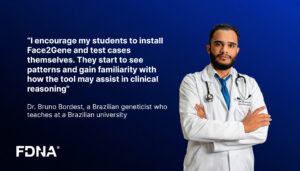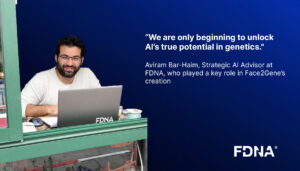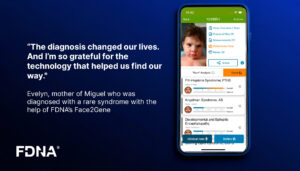December 7, 2022
The article from Metropolis, emphasizes FDNA’s facial analysis app, Face2Gene, which played a crucial role in diagnosing a child with a rare genetic disease. This innovative app uses advanced facial analysis technology to examine patient photos, identifying key features associated with various genetic conditions. By comparing these features to a comprehensive database, Face2Gene provides quick and accurate diagnostic suggestions. This technology significantly aids healthcare professionals in making early and precise diagnoses. FDNA’s facial analysis app exemplifies the transformative power of AI in healthcare, offering a more efficient and accessible way to diagnose rare genetic disorders and improve patient outcomes.


